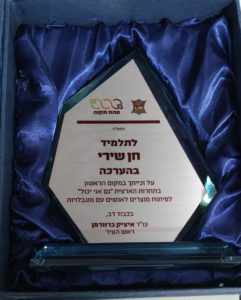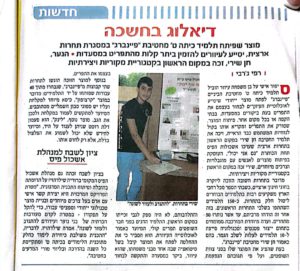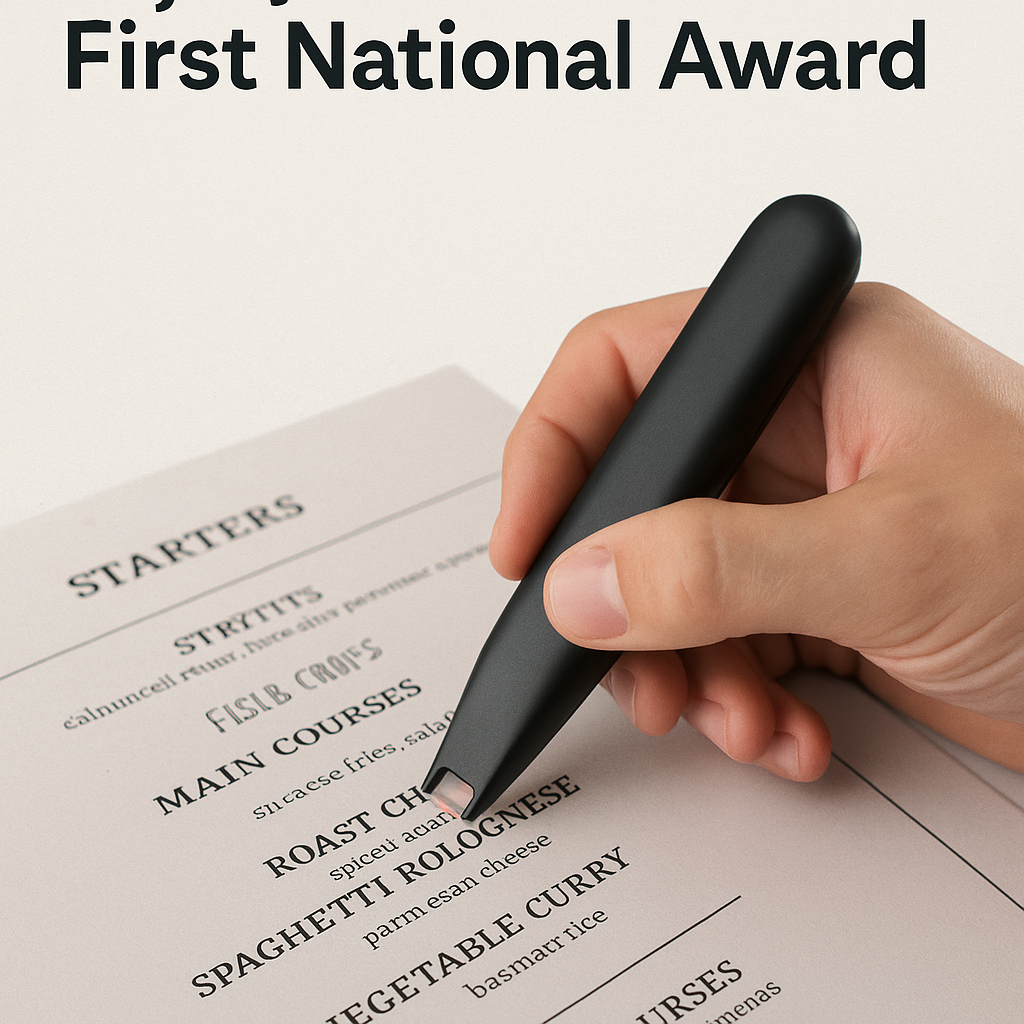My First Invention to Help the Visually Impaired
When I was just 14, I developed a product that went on to win
first place in Israel’s national “I Can Too” innovation competition for accessible inventions. The competition included
hundreds of participants from across the country. Later, in 10th grade, I received an
official Certificate of Excellence and public recognition from my city’s mayor for my contribution to the community.
This was more than just a school assignment — it was my first real-world product, one that made a tangible difference in the lives of others. I called it the
Voice Pen.
 The Problem It Solves
The Problem It Solves
The inspiration came from someone I knew — a young girl who had lost her eyesight due to a rare medical condition. Over time, she became fully blind and was no longer able to read printed materials, especially in places like restaurants, where menus weren’t available in Braille. She wanted to maintain independence — to be able to read by herself without relying on others for help, especially in public settings.
While Braille menus do exist in a few places, they are far from universal. Printed text remains the dominant format, and many people with vision impairments simply skip items or need to ask for help when they want to read.
The
Voice Pen was designed to solve this exact problem.
 My Solution: The Voice Pen
My Solution: The Voice Pen
I developed a small, easy-to-use device that scans a barcode sticker placed next to a printed item (such as a menu item or price list) and reads it out loud. The idea was to create a low-cost, widely adoptable solution that didn’t require rewriting menus or training staff — just placing a small barcode next to each line, which the pen could recognize and read aloud.
The product had three main components:
 A barcode sticker placed next to each printed line
A barcode sticker placed next to each printed line A voice pen — a pen-shaped reader with an internal scanner and speaker
A voice pen — a pen-shaped reader with an internal scanner and speaker A custom-printed menu or document, enhanced with this audio barcode system
A custom-printed menu or document, enhanced with this audio barcode system
Unlike Braille menus, this system could be used by anyone with partial or full vision loss, regardless of their familiarity with Braille. The pen would automatically detect and vocalize the corresponding line.
 Prototyping and Testing
Prototyping and Testing
I built a working prototype using:
- A paper menu from the Aroma café chain
- Custom barcode labels printed and positioned beside each item
- A small speaker, scanner, and a microcontroller to trigger audio output
The device worked well — after testing it with visually impaired users, it proved both practical and easy to use. It was simple to set up, cost-effective, and didn’t require major changes to restaurant infrastructure.
I even created a second version specifically for restaurant use, named
“Audio Menu for Aroma”, which allowed customers to listen to menu items with a simple scan.
 Technical Design and Accessibility Considerations
Technical Design and Accessibility Considerations
The system was built with accessibility in mind:
 Could be used in restaurants, stores, and public offices
Could be used in restaurants, stores, and public offices Didn’t rely on internet access
Didn’t rely on internet access Reusable, rechargeable, and low-maintenance
Reusable, rechargeable, and low-maintenance No Braille literacy required
No Braille literacy required
This was developed before QR codes and smart devices were widespread, making the concept even more innovative for its time.
 Recognition
Recognition
Out of hundreds of inventions, the
Voice Pen won
first place in the national competition — a moment I’ll never forget. A year later, I received
formal recognition from the mayor, with a certificate and public thanks for excellence. The project was even
featured in a major Israeli newspaper, further highlighting its impact and the importance of accessible technology.
 The Problem It Solves
The Problem It Solves My Solution: The Voice Pen
My Solution: The Voice PenA barcode sticker placed next to each printed line
A voice pen — a pen-shaped reader with an internal scanner and speaker
A custom-printed menu or document, enhanced with this audio barcode system
 Prototyping and Testing
Prototyping and Testing Technical Design and Accessibility Considerations
Technical Design and Accessibility ConsiderationsCould be used in restaurants, stores, and public offices
Didn’t rely on internet access
Reusable, rechargeable, and low-maintenance
No Braille literacy required
 Recognition
Recognition

